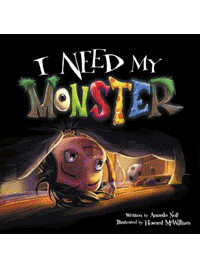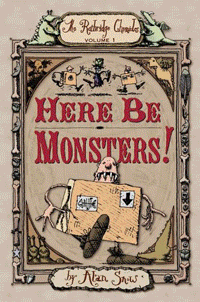
By Avi
Scholastic Press, 2009
$17.99, ages 9-12, 272 pages
While trying to persuade his master to keep him on as his servant, a 10-year-old orphan named Fabrizio becomes entangled in a plot to overthrow the ruler of Pergamontio in this thrilling prequel to Avi's Midnight Magic.
Fabrizio, who was saved from a life on the streets to become the personal servant to Mangus the Magician, is finding it hard to hold onto his position. Mangus thinks Fabrizio is an idle chatterer and a fool for thinking magic is more than illusion, and doesn't believe he needs him.
The magician's wife Mistress Sophia favors the boy, but she's leaving the city to care for her sick sister, which means Fabrizio will have to deal with his difficult master on his own. And if he doesn't convince Mangus that he's useful, Mangus will send him back to the streets to a life of begging.
But then the unimaginable occurs. The surly old magician is accused of plotting to depose King Claudio, the ruler of Pergamontio, and suddenly Fabrizio has a far greater challenge than pleasing his master. Unless he proves that Mangus is innocent, his master will be burned at the stake for treason.
His master's troubles begin when a mysterious figure in a hood shows up at Mangus' magic show and warns Fabrizio that the magician's life is in danger. Two days later the kingdom's chief prosecutor DeLaBina charges Mangus with producing leaflets that call for the king's overthrow.
DeLaBina claims the leaflets were copied too perfectly to be hand-written. Thus Mangus must have created them with magic, as news of the German invention, the printing press, had not yet come to the kingdom. Making matters worse, an informer at the magic show saw Mangus snatch images of the king from thin air and make them disappear then promise to create something from nothing and turn it into many things.
Though DeLaBina offers to spare Mangus' life if he rids the city of the leaflets and reveals who asked him to make the papers, these seem like impossible requests, even for the illusionist and his scrappy servant, and soon both are locked away in the king's castle for plotting against the king. But then Fabrizio remembers his master's lessons in logic and proves he's more clever than anyone knows.
While awaiting execution for aiding Mangus, Fabrizio escapes from his cell, and with the help of a girl he calls a devil, begins to unravel a conspiracy within the King's court. Together they concoct a plan to save Mangus that pits the king's eldest son against his trusted count and requires a coffin to be delivered to the crypt where Mangus is tried.
Master storyteller and Newberry Medal winner Avi creates another taut, suspenseful story that will have you reading faster with every page. What is particularly captivating about Avi's writing is that his characters come to life primarily through dialogue and actions. Avi doesn't pause long to describe his characters and yet you walk away feeling so invested in the characters that it's hard to let them go.









